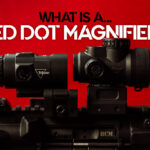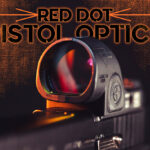
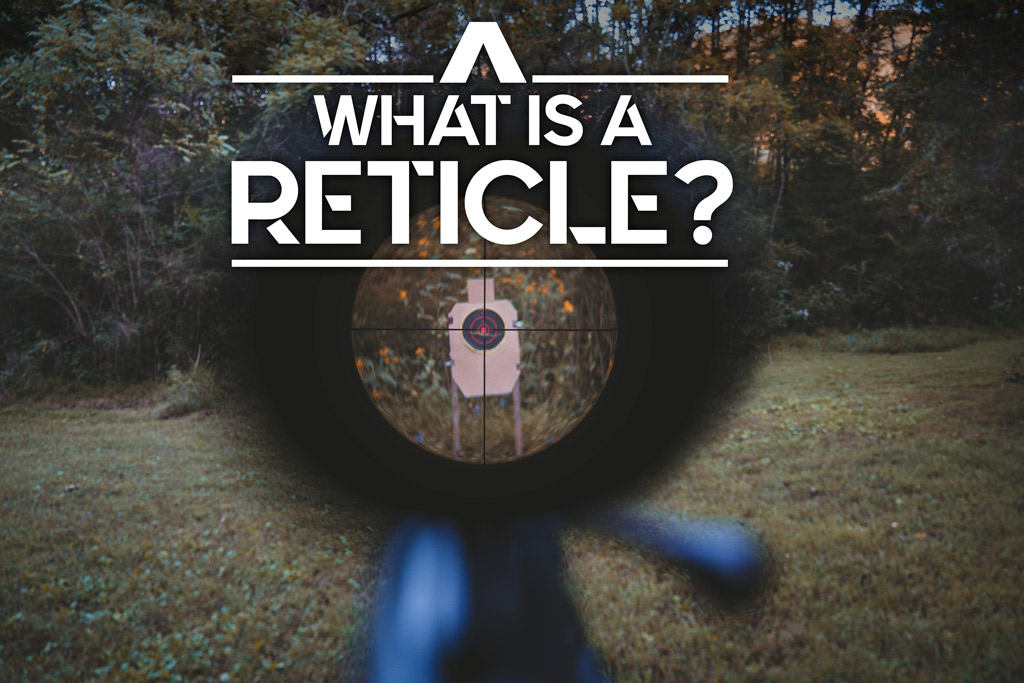
Many shooters select a rifle scope by researching its magnification, lens system, and physical specs. But it’s also important to consider the scope’s reticle in the decision-making process. Admittedly, it can be the most confusing part of choosing a scope. There are many types of reticles available on the market. Unless you’re a seasoned professional shooter, the subtle differences might be difficult to navigate.
At the very least, you should have a general understanding of reticle types. Once you know the different types, you’ll be able to easily match the rifle scope options to your hunting or shooting activity. Here’s what you need to know:
What Is A Reticle?
A reticle is a set of fine lines or fibers inside an optical device. The markings help you with aiming, measuring, or pointing. When you look through a rifle scope, the reticle is the cross, dot, or pattern that you see.
Originally, reticles were made from real hair or spiderweb, and the name “crosshair” stuck. Although optics can be traced back hundreds of years, the first practical rifle optic was invented between 1835 and 1840. After 1850, several U.S. manufacturers produced the sights that would become standard equipment for Civil War sharpshooters, basically the country’s first snipers.
Although the standard crosshair reticle was effective, shooters and equipment evolved to the point that they needed customizable reticles. The modern rifle optics industry was born, and mounted optics became more of a standard feature. While there are too many reticle models to provide an exhaustive list, we’ll look at several of the most popular types, beginning with the one that started it all.
Standard Crosshair

A perpendicular pair of intersecting lines in the shape of a cross is known as the crosshair inside of an optic.
Sometimes called the original reticle or the basic reticle, the crosshair reticle provides a central aiming point with intersecting wires: a vertical (windage) and a horizontal (elevation), both of which are the same thickness.
The crosshair should be sufficient unless you’re a deer hunter making long-distance shots. It offers a clear field of view, allowing the hunter to get on the target quickly. Be aware that even though the crosshairs are accurate and easy to use, the thin wires can be lost among the brush, so they work better in the open fields.
A popular variation of the standard crosshair is the duplex. Pillars twice the thickness of the crosshairs reach three-quarters of the way toward the center of the reticle. The idea behind the duplex reticle is that the shooter’s eye naturally falls to the center of the target.
Crosshair variations continue to be the most popular reticle, a favorite among the competition, and target shooters for their precise aiming point.
Mil-Dot Reticle
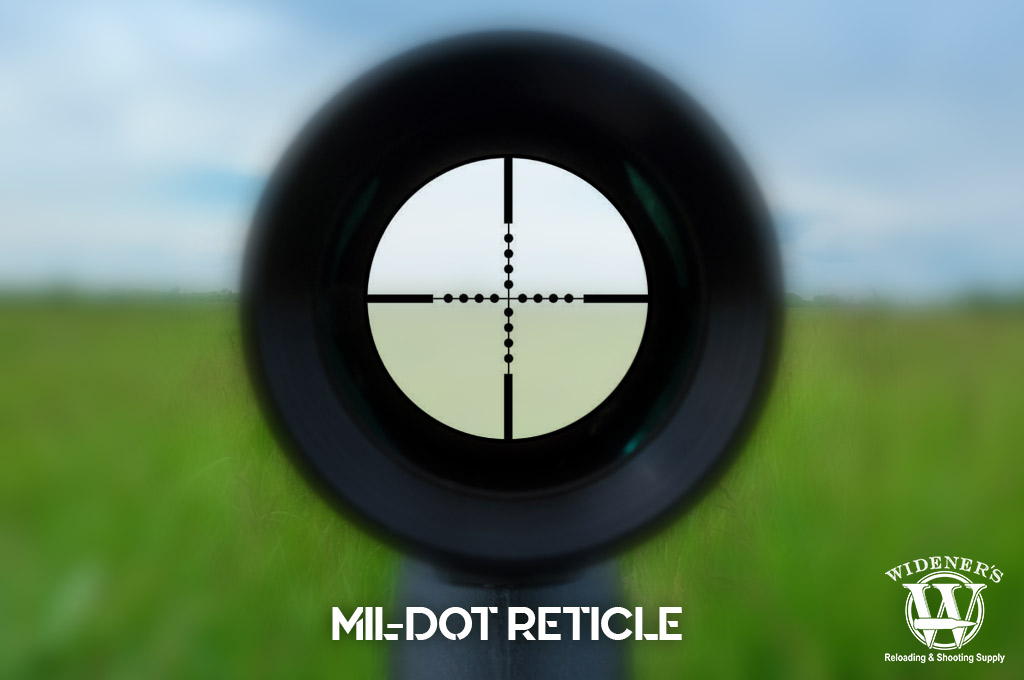
A Mil-Dot reticle features a duplex crosshair with an equally spaced pattern of small dots on the axis for range estimation.
The Milliradian Dot (Mil-Dot) reticle works well for those shooting long distances, especially when it will be a one-time shot on the target. This reticle provides the shooter with enough information to make that shot count.
These reliable measurements can calculate the range if the target size is known, and they can aid in compensating for wind drift. Keep in mind that all this information can be a bit too much for the average shooter to absorb. However, if you’re willing to learn the details of the Mil-Dot and how to use it effectively, you’ll have a useful reticle for several applications.
Today, the Mil-Dot is the standard for military scopes and law enforcement snipers.
BDC Reticle
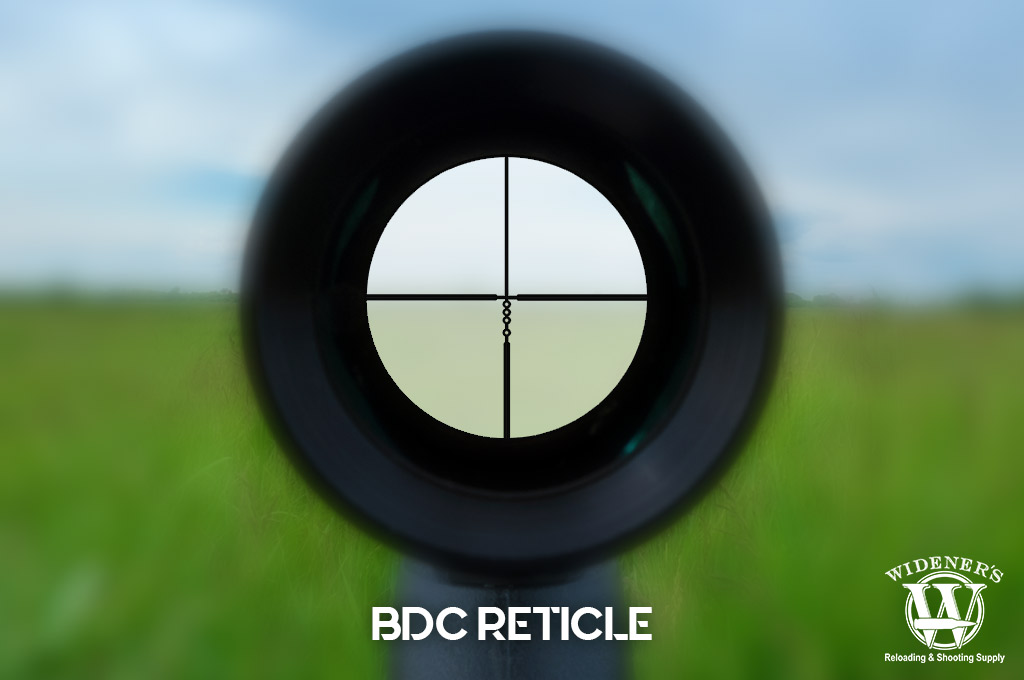
The BDC reticle features a duplex crosshair with circles or dots below the center to compensate for bullet drop.
Bullet Drop Compensator (BDC) reticles give the shooter an estimate of how far the bullet will drop at a certain range. They normally feature a center crosshair with markings below for compensation. If the center crosshair is zeroed at 100 yards, the markings below the crosshair become the bullet’s trajectory at 200, 300, or more yards and beyond. More advanced BDC reticles also feature markings to adjust for windage. We commonly refer to these advanced reticles as “trees,” or Christmas trees.” The BDC style is popular for hunting or tactical applications.
German #1 & #4 Reticles
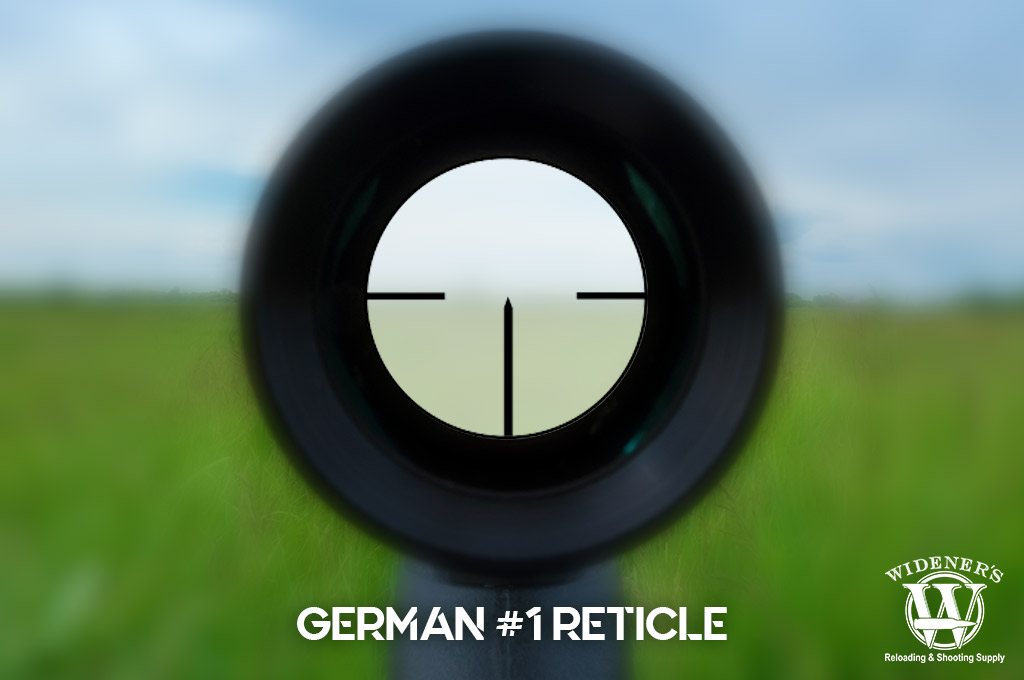
German #1 style features an open duplex post design, while the #4 style features the same design with a fine crosshair.
These reticle styles were created in Germany. German snipers used them in both world wars, although we don’t recommend them for long-distance shooting today. There are no crosshairs, only a main post and side posts to frame the target. German reticles are an excellent option for low-powered scopes designed for hunting big game at close range where you want to point and shoot very quickly.
Even though #4 differs little from #1, it is the more popular of the two today, providing better ergonomics for accurate aiming. Neither of these reticles is ideal for small targets, but they would work when hunting dangerous game in Africa, for instance. These German-style grids are often illuminated.
Circle Reticle
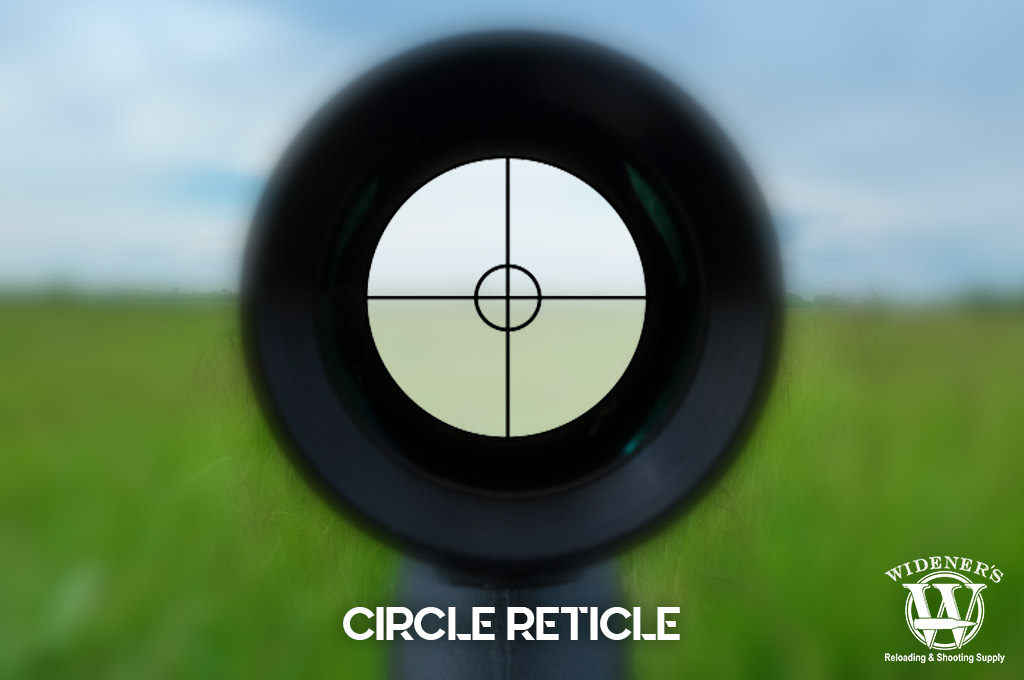
Most circle reticles feature a circle around the center of a crosshair with a marking or dot in the center.
The circle reticle is a standard crosshair reticle with a dot in the center or a circle around the center of the crosshair. The dot and circle draw the shooter’s eye to the center of the reticle for faster target acquisition and greater precision. Circle dot reticles are favored for competition shooting and hunting fast-moving game, such as rabbits, troublesome varmints, or hogs. This type of reticle typically works better for turkey hunting as they have a crosshair inside of a larger circle.
The circle plex reticle is a variation of the circle dot, where a crosshair resides in the center of a circle. The crosshair generally is in the shape of a cross and does not extend past the boundaries of the circle inside of the reticle. In some circle plex versions, there is a dot at the center of the cross. This variation is popular in tactical style scopes and optics.
Modern Rangefinding Reticle

Modern rangefinding reticles feature horizontal markings for measuring the size of targets to determine their distance.
Today’s rangefinding reticles assist the shooter in determining the distance to the target. Some of these reticles have a scale in the lower part of the sight picture. While others have horizontal lines of different widths below the crosshair. Their purpose is to give the shooter a single magnification to sight in targets and estimate their distance.
Classic Rangefinding Reticle
These rangefinders are designed for human targets. With the horizontal lines placed at the shoulders of a human silhouette to estimate the distance to the target. Rangefinding reticles can be very complicated when you compare them to simple reticles, but they are essential for anyone hunting without a spotter to estimate distances for them. You’re more likely to find these reticles in older military-style scopes.
SVD-Type Reticle
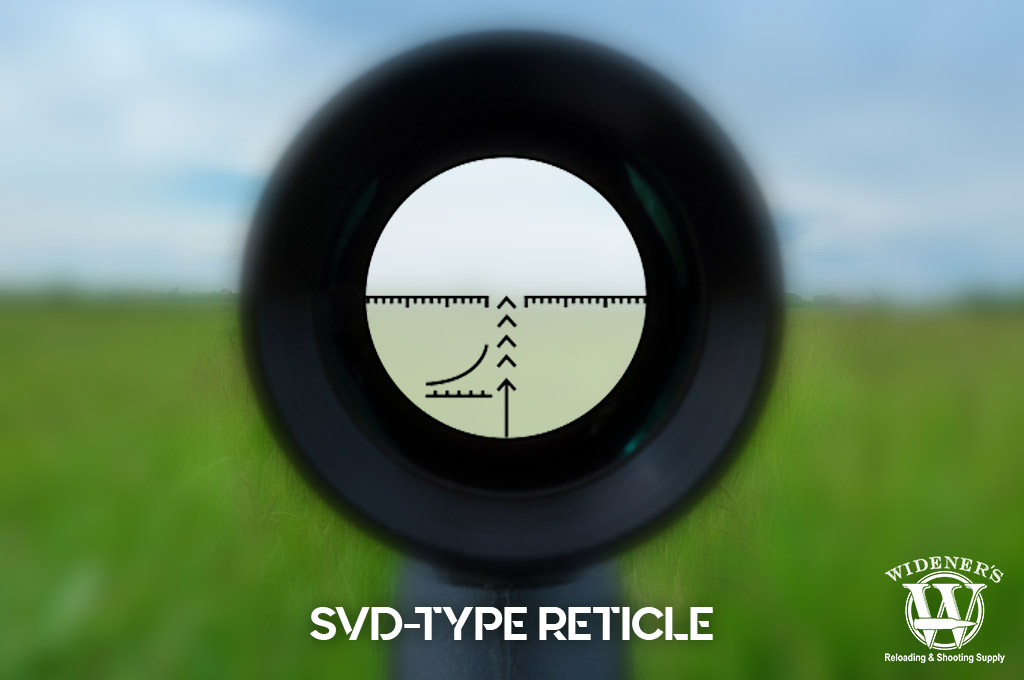
The SVD-Type features a scale on the left to determine the distance to the target and is commonly found in the PSO-1 scope.
The prime example of an SVD-type reticle is the one you’ll find in the PSO-1 scope. It was designed for the Russian Dragunov SVD sniper rifle as a telescopic sight for military activities. The SVD-type is a rangefinder design created to be used in distance-to-target estimations. As with most modern optics, it includes markings for bullet drop and wind drift compensation.
PSO-1 Scope Reticle
The PSO-1 reticle’s “floating” elements assist in range estimation, bullet drop, and drift compensation. Despite its age, it is illuminated by battery power. The top chevron (^) mark is the main aiming mark. The horizontal marks (10…10) help adjust for windage and lead moving targets.
The curved line on the lower left quadrant with the numbers (10..2) can also be used to measure the distance to the target, using a human of average height. The shooter aligns the scope so that the person’s feet touch the bottom horizontal line and then sees which marking the person’s head touches.
ACSS Reticle
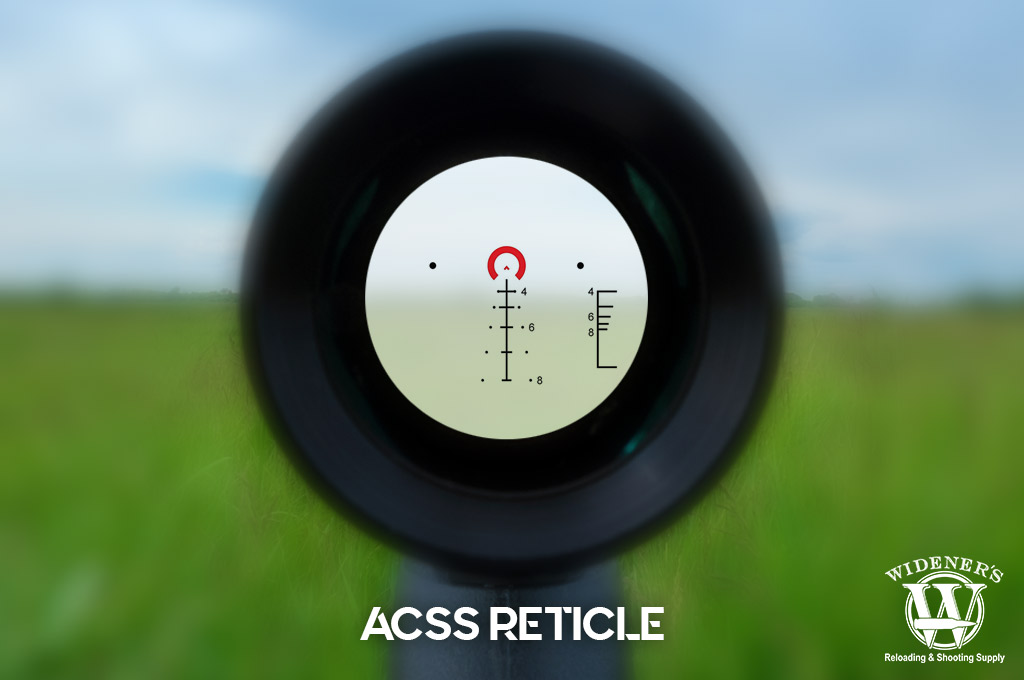
The ACSS-style reticle includes markings to compensate for bullet drop, windage, target range, and target leads.
ACSS stands for Advanced Combined Sighting System. It has numerous features for combat targeting accuracy at longer distances without the loss of speed. The horseshoe at the center is designed for close-quarters combat. While the center dot is meant to be zeroed at 100 yards on your weapon. The stepped ladder below the horseshoe provides users with a guide to adjust for distance and windage.
Although a bit complex for novice shooters, the reticle’s capabilities and flexibility allow the user to focus on four areas:
- Bullet drop: The chevron and horseshoe are illuminated and part of the reticle used for close-quarters battle (CQB). The ladder below is the bullet-drop compensation table.
- Windage: The dots represent a five-mph wind’s effect on an M193 round at the given ranges.
- Ranging: Shooters have the option of estimating using either target height or width.
- Leads: Allows the shooter to hit a target moving perpendicular to the line of fire, whether it’s walking or running.
The ACSS reticle is a great option for hunting and military applications.
Understanding Reticle Types
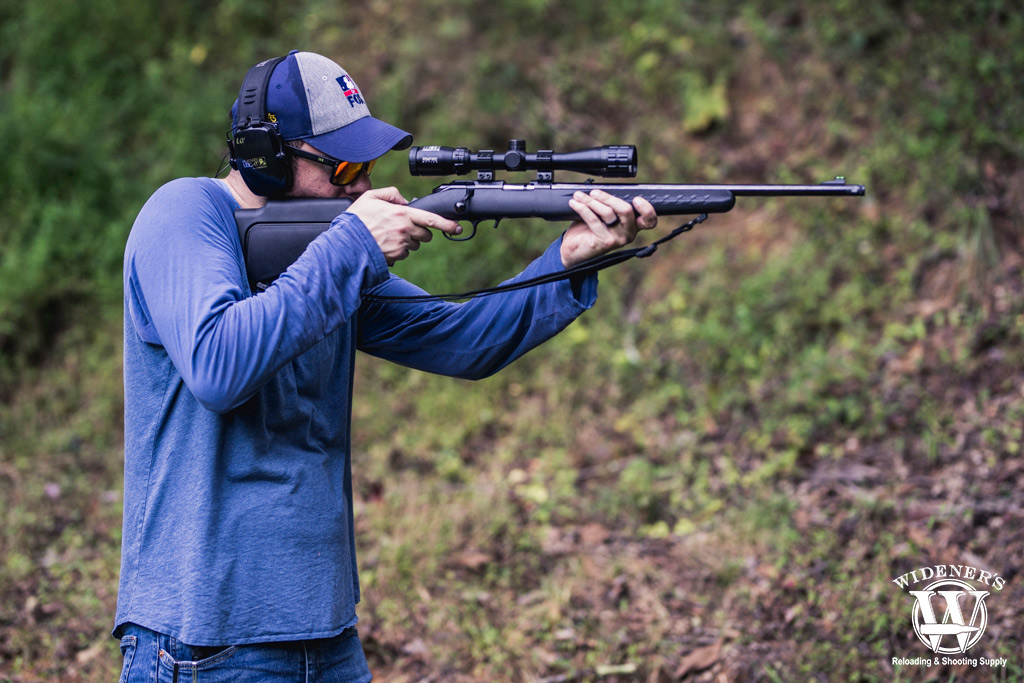
Choosing the right reticle for a specific application can be a decision of budget, precision, and speed.
Many manufacturers offer multiple reticle options for the same scope. As a result, you’ll need to decide which options work best for your needs. No matter which reticle you choose, you’ll now have a better understanding of the terminology. Different reticles are like different tools, you’ll need to select the right one for your intended application. For example, a circle reticle is great for hunting turkey, but may not be the best choice for far-away deer.
Take your time and do research when selecting a reticle. Don’t be afraid to get hands-on and try several different options out at the range. You may find more than one option that suits your needs. Likewise, for many gun owners, knowing what you don’t want can be just as important. Although it can be confusing, stick with it, you’ll find the perfect option to make your setup complete.


